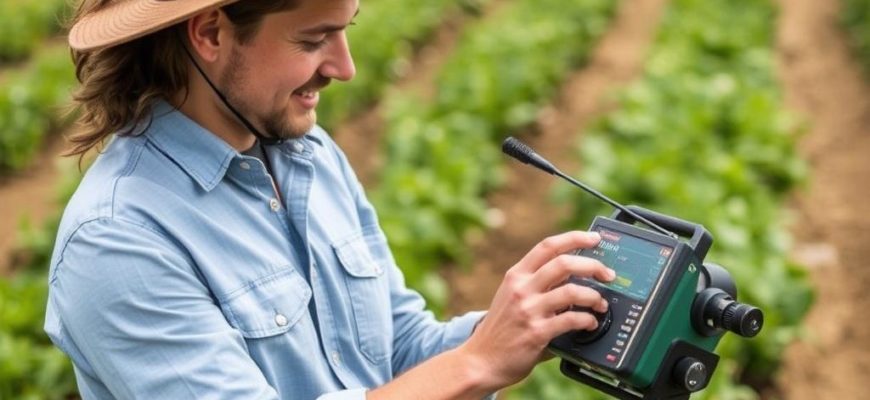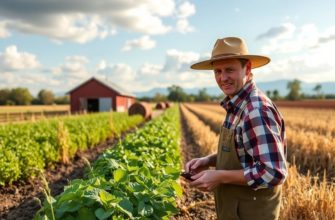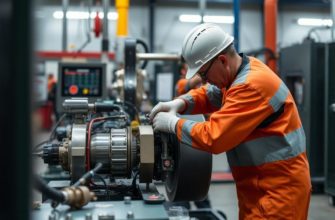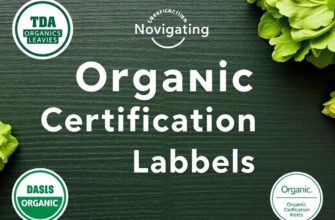Международное название:
Синонимы:
Характеристики:
| Сложность: | |
| Цикл развития: | |
| Световой режим: | |
| Режим полива: | |
| Температура: | |
| Почва: | |
| Ключевая черта: |
Цвет листвы
Цвет бутонов
Размеры цветка
Систематика:
| Домен: | |
| Царство: | |
| Отдел: | |
| Класс: | |
| Порядок: | |
| Семейство: | |
| Род: |
Precision agriculture sounds like something from a science fiction novel: tractors guided by satellites, drones peering over fields, and software predicting exactly when to irrigate or fertilize. But the reality is that precision agriculture is practical, accessible, and transformational for farmers of all scales. If you’re new to the idea, this guide will walk you through what precision agriculture is, why it matters, the core technologies, how to start small, and how to make informed decisions that balance cost, risk, and return.
Think of precision agriculture like tailoring a suit instead of buying one off the rack. Traditional farming treats an entire field the same way. Precision agriculture means treating each part of the field according to its unique needs. That simple idea can boost yields, save inputs like water and fertilizer, reduce environmental impact, and make your operation more resilient. Over the next several sections, we’ll break down the concepts into digestible steps and practical advice, so whether you run a family farm or manage a pilot project, you’ll leave with usable knowledge and a realistic plan.
- What Is Precision Agriculture?
- Why It Matters Now
- Core Technologies and Tools
- Global Navigation Satellite Systems (GNSS) and Auto-Guidance
- Sensors and Internet of Things (IoT)
- Remote Sensing: Drones and Satellites
- Variable Rate Technology (VRT)
- Yield Mapping and Farm Management Software
- Data Analytics and Machine Learning
- Robotics and Automation
- Benefits of Precision Agriculture
- Economic Benefits
- Environmental Benefits
- Risk Management and Traceability
- Operational Efficiency
- Getting Started: A Step-By-Step Roadmap
- Step 1 — Define Your Goals
- Step 2 — Conduct a Field Assessment
- Step 3 — Start Small with High-Impact Technologies
- Step 4 — Add Remote Sensing and VRT When Ready
- Step 5 — Build Data Practices and Skills
- Step 6 — Monitor, Measure, and Adjust
- Costs, Financing, and Return on Investment
- Data Management and Privacy
- Key Data Management Practices
- Who Owns the Data?
- Practical Field Examples and Case Studies
- Case Study 1 — The First-Time Autosteer User
- Case Study 2 — Soil Moisture Sensors for Irrigators
- Case Study 3 — Drone Scouting for Early Pest Detection
- Challenges and How to Overcome Them
- Challenge — Upfront Cost and Financing
- Challenge — Data Overload and Complexity
- Challenge — Connectivity in Rural Areas
- Challenge — Skill Gaps
- Environmental and Social Considerations
- Environmental Impacts
- Social and Labor Impacts
- Policy, Incentives, and Regulations
- Common Myths and Misconceptions
- Myth: Precision Agriculture Is Only for Big Farms
- Myth: Precision Agriculture Eliminates Farming Knowledge
- Myth: You Need Perfect Data to Start
- Future Trends to Watch
- Integration and Interoperability
- Edge Computing and Real-Time Decisions
- Smaller, Targeted Robotics
- AI-Powered Recommendations
- Checklist: What to Do This Season
- Resources and Where to Learn More
- Quick Reference Table: Which Technology to Start With
- Practical Tips from Farmers Who’ve Been There
- Glossary — Simple Definitions
- Where Precision Agriculture Fits in Sustainable Farming
- Final Thought Before You Begin
- Conclusion
What Is Precision Agriculture?
Precision agriculture is an approach to farm management that uses data, technology, and targeted practices to optimize inputs and crop performance at a fine spatial scale. Instead of applying the same fertilizer, seed, or pesticide uniformly across a field, precision agriculture aims to vary those inputs based on measured differences in soil, topography, crop health, and microclimate.
At its core, precision agriculture is about measuring variation and managing accordingly. That measurement can come from simple soil samples and yield maps or from advanced remote sensing and machine learning systems that monitor each acre in near real time. Regardless of the tools, the goal is to make smarter, faster, and more cost-effective decisions.
Why It Matters Now
There are three big reasons precision agriculture is gaining momentum today. The first is economics: input costs—fertilizer, fuel, labor—have risen, so efficiency matters. The second is environmental concern: regulators and consumers demand more sustainable practices, and precision techniques can reduce runoff, emissions, and chemical use. The third is technology: sensors, connectivity, and computing power are now affordable and rugged enough for agricultural environments, meaning even small and medium farms can participate.
We’ll explore each of these reasons in more depth later, but it’s helpful to remember that precision agriculture is not a passing fad. It is an evolution of farming driven by measurable financial and environmental benefits combined with accessible technology.
Core Technologies and Tools
There are several core technologies that make precision agriculture possible. You don’t need all of them at once—many farms start with one or two and build over time. Here’s a clear look at these technologies and how they fit into the system.
Global Navigation Satellite Systems (GNSS) and Auto-Guidance
GNSS, which includes GPS and other global satellite systems, allows machines to know their exact position in the field. Auto-guidance systems steer tractors and implements along precise paths, reducing overlap and saving time, fuel, and inputs. For beginners, GNSS-guided autosteer is a popular first investment because it delivers immediate savings and improves the consistency of field operations.
Sensors and Internet of Things (IoT)
Sensors measure conditions that matter: soil moisture, temperature, nutrient levels, and crop health indicators. These can be in-ground probes, canopy sensors mounted on machinery, or weather stations. When sensors are connected and share data, they create a network (IoT) that feeds real-time information to decision-making platforms.
Remote Sensing: Drones and Satellites
Remote sensing uses cameras and other instruments on drones, airplanes, or satellites to capture images and data across fields. Multispectral and thermal imaging reveal plant stress, pest infestations, or water issues long before they’re visible to the naked eye. Drones are especially useful for spot-checks and rapid responses, while satellite data is excellent for broad, routine monitoring.
Variable Rate Technology (VRT)
VRT allows machinery to change the rate of seeds, fertilizers, and pesticides in specific locations on the go. Instead of a uniform application, VRT matches input rates to the conditions measured by sensors or derived from maps, improving efficiency and alignment with crop needs.
Yield Mapping and Farm Management Software
Yield monitors on combines create maps of productivity across the field. Farm management information systems (FMIS) and precision ag platforms store this and other data, enabling analysis over time. These systems help you make sense of data, plan variable-rate prescriptions, and track results for cost-benefit analysis.
Data Analytics and Machine Learning
Collecting data is only half the battle. Analytics and machine learning turn raw data into insights: predicting disease risk, modeling yield potential, or suggesting optimized schedules for irrigation and input application. As these tools become more user-friendly, farmers can leverage predictive insights without needing a data scientist on staff.
Robotics and Automation
Robotic planters, weeding robots, and autonomous sprayers are emerging technologies that automate repetitive tasks. While not essential for every operation today, robotics illustrates the trajectory of precision agriculture: smaller, targeted machines that reduce labor needs and increase timing precision.
Benefits of Precision Agriculture
Adopting precision agriculture can produce a range of benefits, though the size and timing of those benefits depend on the farm, crops, and management. Here are the primary advantages:
Economic Benefits
– Reduced input costs through targeted fertilizer and pesticide use.
– Lower fuel and labor expenses thanks to efficient routing and automation.
– Potential yield increases by addressing limiting factors in micro-zones of a field.
– Improved record-keeping that supports better crop planning and market access.
Environmental Benefits
– Less nutrient runoff and groundwater contamination with precise fertilizer application.
– Reduced chemical use and better control over pesticide exposure.
– More efficient water use through targeted irrigation, conserving scarce resources.
Risk Management and Traceability
– Greater resilience through data-driven decisions that optimize for variable weather and pest pressure.
– Traceability benefits for consumers and buyers who demand evidence of sustainable practices, which can open premium markets.
Operational Efficiency
– Better planning reduces downtime and maximizes equipment utilization.
– Faster responses to emerging problems because sensors and imagery reveal issues early.
Getting Started: A Step-By-Step Roadmap
Starting with precision agriculture can feel overwhelming, so here’s a practical, step-by-step roadmap for beginners. Think of it as building a house: you start with a foundation and add rooms as you need them.
Step 1 — Define Your Goals
Before buying any technology, decide what you want to achieve. Are you aiming to reduce fertilizer costs, improve water use, monitor crop health, or just gain experience with technology? Clear goals help you choose the right tools and measure success.
Step 2 — Conduct a Field Assessment
Gather basic data: soil maps, historical yield maps, and field topography. This baseline shows where variability exists and which zones might benefit most from precise management. Soil sampling across different zones is a low-tech but powerful starting point.
Step 3 — Start Small with High-Impact Technologies
For many beginners, the best initial investments are:
– GNSS-enabled autosteer for tractors.
– Yield monitoring on harvesters.
– A basic farm management platform for storing and visualizing data.
– Simple soil moisture probes or a weather station.
These tools give quick wins: reduced overlap, better records, and a foundation of data.
Step 4 — Add Remote Sensing and VRT When Ready
Once you have baseline data and are comfortable with data flows, consider drones or satellite subscriptions for crop scouting and variable-rate technology for input application. Start with a pilot area to validate prescriptions before full-field adoption.
Step 5 — Build Data Practices and Skills
Develop routines for data collection, backup, and review. Set aside regular times—post-harvest and pre-planting—to analyze last season’s data, plan variable-rate maps, and adjust budgets. Training and peer networks can accelerate learning.
Step 6 — Monitor, Measure, and Adjust
Precision agriculture is iterative. Track key performance indicators (KPIs) like input cost per acre, yield per zone, and water use. Compare treated zones to control areas where traditional practices continue. Use this evidence to refine strategies.
Costs, Financing, and Return on Investment
One of the biggest questions beginners ask is, “How much will this cost, and when will I see payback?” Costs vary widely based on the technologies chosen, farm size, and whether you lease, buy used, or buy new. Below is a simple table that outlines typical cost ranges and expected benefits to help you plan.
| Technology | Typical Upfront Cost Range (USD) | Primary Benefit | Estimated Payback Time |
|---|---|---|---|
| GNSS Autosteer | $5,000 – $25,000 | Reduced overlap, fuel savings, precision timing | 1–3 years |
| Yield Monitor | $2,000 – $10,000 | Yield maps for decision-making | 1–2 years |
| Soil Moisture Sensors / Weather Station | $500 – $5,000 | Better irrigation scheduling | 1–3 years |
| Drones (basic) | $1,500 – $10,000 | Scouting, early detection of stress | 1–3 years |
| VRT-capable Equipment | $3,000 – $50,000+ | Variable input application | 2–5 years |
| Farm Management Software Subscription | $100 – $2,000/year | Data management and analytics | Ongoing |
These figures are indicative. Many farmers combine strategies: for example, using a subscription drone service rather than buying a drone, or leasing autosteer kits. Financing options include equipment loans, government grants for sustainable practices, and cooperative buying groups to spread costs.
Data Management and Privacy
As you adopt precision tools, you’ll collect more data than ever before. Good data management practices protect the value of that information and reduce risk.
Key Data Management Practices
- Consolidate data into one or two trusted platforms instead of scattering files across multiple devices.
- Schedule regular backups to secure cloud storage or an off-site drive.
- Use consistent naming conventions and metadata (date, field, crop) to make retrieval simple.
- Limit access to sensitive information and employ strong passwords and two-factor authentication.
Who Owns the Data?
Data ownership can be a grey area. Equipment vendors, software providers, and service contractors may claim rights in their terms of service. Carefully review agreements and consider negotiating terms that guarantee you access to your data and control over sharing. Joining a farmers’ cooperative or trusted data consortium can strengthen negotiating power.
Practical Field Examples and Case Studies
Examples make the abstract real. Here are a few short case studies illustrating different entry points into precision agriculture.
Case Study 1 — The First-Time Autosteer User
A 500-acre grain farmer installed an autosteer system on his main tractor. The system reduced overlap during spraying and planting, saving 5–10% on input costs and fuel in the first season. The improved consistency also made yield results more uniform across the field, simplifying harvest logistics.
Case Study 2 — Soil Moisture Sensors for Irrigators
A vegetable grower with drip irrigation added soil moisture sensors at several depths in a few representative fields. The data allowed the grower to reduce irrigation frequency and volume by 20%, maintaining crop quality while saving water and pumping costs. The payback was under 18 months.
Case Study 3 — Drone Scouting for Early Pest Detection
A small orchard operator used a drone service to perform weekly NDVI imaging during the growing season. Early detection of a disease hotspot allowed targeted spray applications, preventing spread and saving trees that would have been lost with a delayed response.
Challenges and How to Overcome Them
Precision agriculture offers many benefits, but it also comes with challenges. Recognizing these and preparing for them makes your transition smoother.
Challenge — Upfront Cost and Financing
Solution: Start small. Lease or use service providers for drones and data analytics, join cooperative purchasing groups, or pursue grants for sustainability projects.
Challenge — Data Overload and Complexity
Solution: Focus on the data that answers your primary questions. Begin with yield maps and simple sensor readings, and add complexity only when you can use it.
Challenge — Connectivity in Rural Areas
Solution: Use technologies designed for low-bandwidth environments—local data loggers, intermittent cloud sync, or mobile hotspot strategies. Some sensors and systems also provide offline modes until connectivity is available.
Challenge — Skill Gaps
Solution: Invest in training, seek peer mentorship, or hire short-term consultants to set up systems and train staff. Universities, extension services, and vendor training are often available.
Environmental and Social Considerations
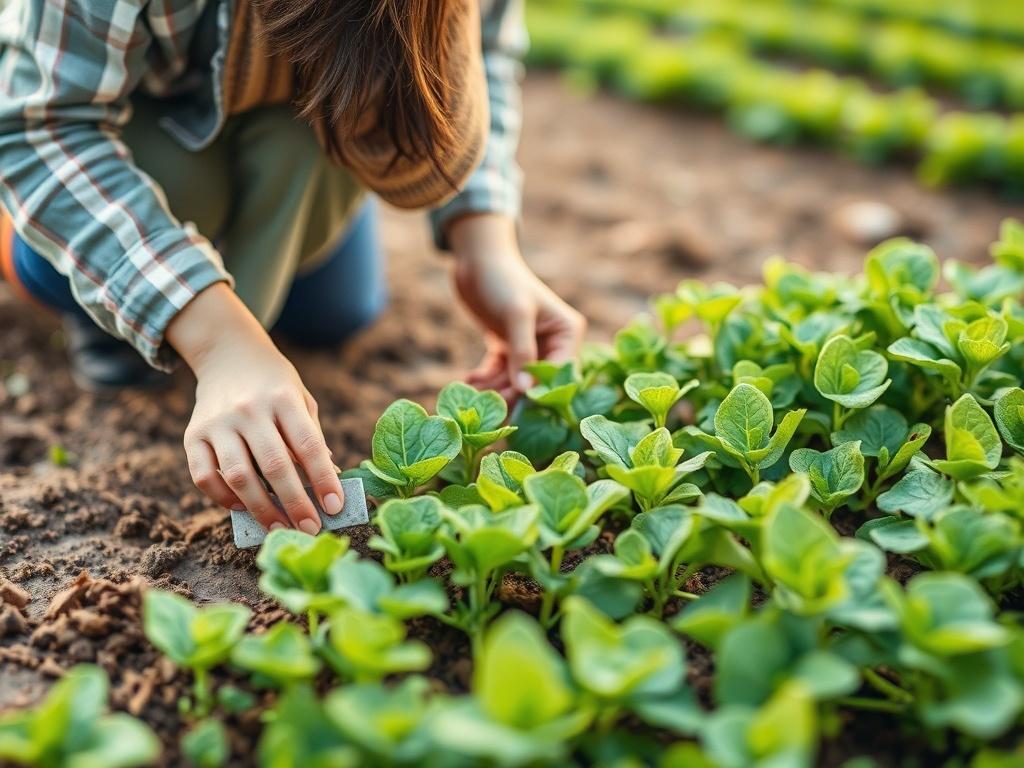
Precision agriculture is often promoted for its environmental benefits, but it’s not automatically green. The social and ecological outcomes depend on how technologies are used.
Environmental Impacts
When applied thoughtfully, precision techniques reduce nutrient runoff, conserve water, and minimize pesticide exposure. On the other hand, poorly implemented systems could increase chemical use by targeting areas incorrectly or by encouraging intensification without sustainability safeguards. The key is good data, careful prescriptions, and monitoring outcomes.
Social and Labor Impacts
Automation changes labor needs. While some tasks may be reduced, the demand for skilled operators and technicians increases. Investing in workforce training is essential, and changes should be managed to support local employment where possible.
Policy, Incentives, and Regulations
Government programs increasingly support precision agriculture through subsidies, technical assistance, or conservation payments. Look for local and national programs that offer:
- Cost-share grants for precision equipment or sensors
- Technical assistance and demonstration plots through extension services
- Incentives for conservation practices implemented with precision tools
Be aware of regulatory requirements related to data, chemical application, and drone operation. Register drones where required, and follow manufacturer and local guidelines for application technologies.
Common Myths and Misconceptions

Let’s clear up some frequent misunderstandings.
Myth: Precision Agriculture Is Only for Big Farms
Reality: While large farms can scale investments, many precision tools are affordable for small and medium operations. Services, leasing, and cooperative approaches make adoption feasible.
Myth: Precision Agriculture Eliminates Farming Knowledge
Reality: Technology augments, not replaces, farmer expertise. Sensors and analytics provide insights, but human judgment remains critical.
Myth: You Need Perfect Data to Start
Reality: Start with imperfect data. Early insights often come from basic maps and observations. Over time, data quality improves as systems are refined.
Future Trends to Watch
The technology landscape evolves quickly. Here are trends likely to shape the next decade of precision agriculture.
Integration and Interoperability
Systems will become more interoperable, allowing smoother data sharing between machines, software, and advisors. Open standards and APIs will reduce vendor lock-in and increase farmer control over data.
Edge Computing and Real-Time Decisions
As edge computing matures, more decisions will be made locally on machines and sensors, enabling truly real-time variable-rate applications, autonomous responses, and reduced reliance on constant connectivity.
Smaller, Targeted Robotics
Robots designed for weeding, picking, and in-field scanning will offer labor alternatives and precision treatments, especially in high-value crops.
AI-Powered Recommendations
Artificial intelligence will continue to improve predictions for disease risk, optimal planting dates, and input optimization. Expect more plug-and-play analytics that provide actionable recommendations rather than raw data.
Checklist: What to Do This Season
If you’re ready to take a step this season, here’s a practical checklist to guide your actions.
- Define 2–3 clear goals for precision adoption (e.g., reduce nitrogen use by 10%).
- Collect existing data: soil tests, past yield maps, field boundaries.
- Install one new tool: autosteer, soil moisture probes, or yield monitor.
- Subscribe to a satellite or drone service for periodic scouting.
- Set up a simple data storage routine and backup plan.
- Train staff on basic operation and data handling.
- Review results post-harvest and plan adjustments for next season.
Resources and Where to Learn More
Pursuing precision agriculture is easier when you tap into networks and trusted resources. Consider:
- Local extension services and university ag departments for demonstrations and training.
- Manufacturer webinars and certified dealer training for equipment-specific knowledge.
- Farmer cooperatives or user groups where peers share lessons and pooling strategies.
- Online forums, podcasts, and webinars focused on precision ag and farm data.
Quick Reference Table: Which Technology to Start With
| Your Goal | Starter Technology | Why It’s a Good First Step |
|---|---|---|
| Reduce overlap and improve field efficiency | GNSS Autosteer | Immediate fuel and time savings; simple ROI |
| Understand where yield varies | Yield Monitor | Creates baseline maps to guide future decisions |
| Improve irrigation efficiency | Soil Moisture Sensors / Weather Station | Directly informs irrigation scheduling for water and cost savings |
| Faster detection of pests/diseases | Drone Imaging or Satellite NDVI | Early detection enables targeted responses |
| Reduce fertilizer costs selectively | VRT + Soil Mapping | Matches fertilizer to need and reduces waste |
Practical Tips from Farmers Who’ve Been There
– Start with a pilot field: test systems on a portion of your land before committing across your whole operation.
– Keep paper notes for a season: while transitioning to digital, paper notes help link new data to observed practices.
– Talk to your neighbors: they might share equipment, services, or experiences that reduce your learning curve.
– Build your data habits: schedule regular reviews and make data-driven decisions part of your planning routine.
– Don’t chase the latest shiny gadget: choose tools that solve your immediate problems and match your comfort level.
Glossary — Simple Definitions
- Variable Rate Technology (VRT): Equipment that varies application rates of inputs across a field based on prescriptions or sensor readings.
- Yield Monitor: Device on harvesters that records crop yield and moisture data, enabling yield mapping.
- NDVI: Normalized Difference Vegetation Index, an indicator derived from multispectral imagery that shows plant health.
- Edge Computing: Local processing of data on devices or machines, reducing the need to send large amounts of data to the cloud.
- Prescription Map: A spatially explicit plan that tells an applicator how much input to apply to each part of the field.
Where Precision Agriculture Fits in Sustainable Farming
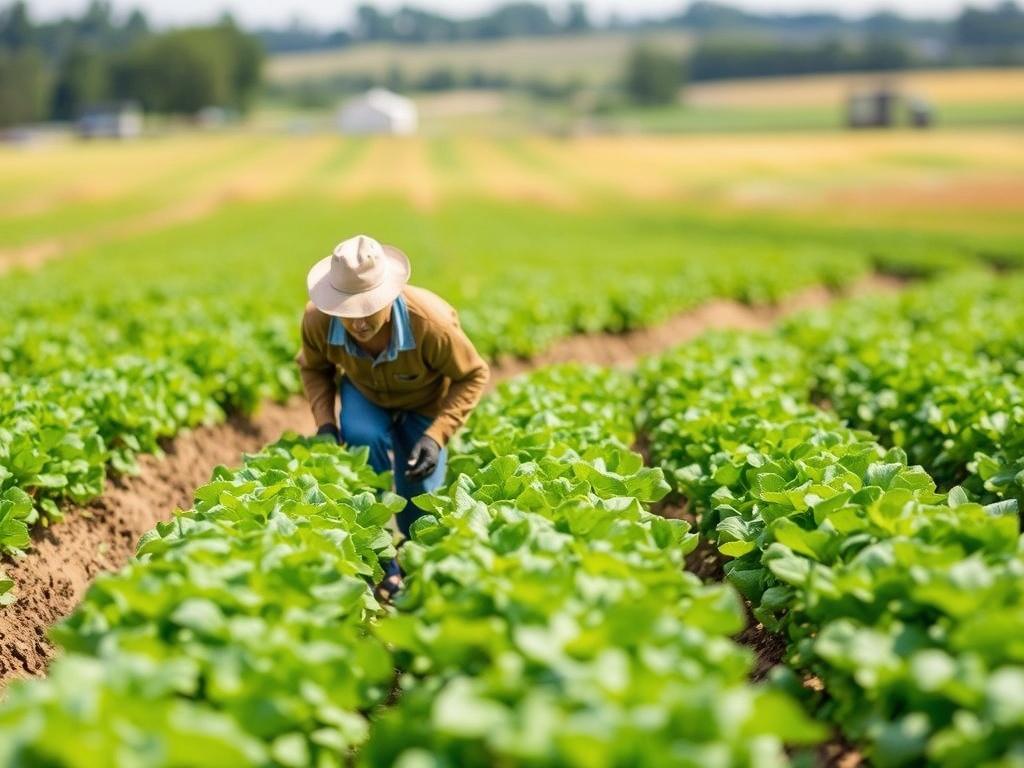
Precision agriculture and sustainability align when goals are explicit: reducing waste, protecting water, and maintaining soil health. Precision approaches can bolster regenerative practices by enabling targeted nutrient applications, optimizing cover crop strategies, and monitoring soil health indicators over time. The data-driven nature of precision agriculture helps document improvements and supports continuous learning, whether your aim is higher profit or a smaller footprint.
Final Thought Before You Begin
Precision agriculture is a journey rather than a destination. The technologies and practices you adopt this season will evolve as your knowledge grows and new tools emerge. The best approach is pragmatic: start with clear goals, choose tools that address those goals, and iterate. With patience and curiosity, precision agriculture can transform how you farm—making your operation more efficient, resilient, and sustainable.
Conclusion
Precision agriculture is accessible, practical, and powerful, offering economic, environmental, and operational benefits for farms of all sizes; by starting with clear goals, collecting good baseline data, adopting one or two high-impact technologies, building data management habits, and iterating season to season, you can gradually transform your operation to be more efficient and resilient while keeping costs and risks manageable.
Оценивайте статью, делитесь материалом с друзьями в социальных сетях, а также высказывайте свое мнение в обсуждении ниже! ![]()
